The Council on Geostrategy’s maritime magazine The Broadside has highlighted a new article from The Signal, William Freer’s monthly newsletter, examining the United Kingdom’s recent progress in naval exports, deployments, and industrial recovery.
In the latest edition, Freer argues that after decades of underinvestment, Britain’s shipbuilding industry is beginning to show tangible results. He points to the National Shipbuilding Strategy and the recapitalisation of the Royal Navy’s fleet as overdue but now producing dividends.
Freer writes that export success has been central to this revival, with the Type 26 frigate design selected by Canada and Australia, and the Type 31 exported to Indonesia and Poland. Together, these agreements will see 26 British-designed ships built abroad, often with British components.
The breakthrough, he notes, came in August when Norway announced its choice of the Type 26 for a £10 billion programme, with the ships to be built on the Clyde. “These five warships will be the first escorts a British shipyard has built to a foreign order since Argentina ordered Type 42s in 1970,” he observed, calling it the end of a “damning 55-year hiatus.”
The article also surveys Royal Navy activity, including the reassembly of Carrier Strike Group 2025 in East Asia, the continuation of towed array patrol duties, and evidence of Astute-class submarine operations.
Freer’s central message is that Britain’s recent progress demonstrates the dividends of even modest investment. He argues that “if Britain can get such dividends from these tentative steps towards remembering its maritime strategic culture, imagine what it could do if it applied itself with more vigour.”
The full article can be read on The Broadside, the Council on Geostrategy’s online magazine of maritime affairs produced in cooperation with the Royal Navy Strategic Studies Centre. Readers can find out more and sign up here.


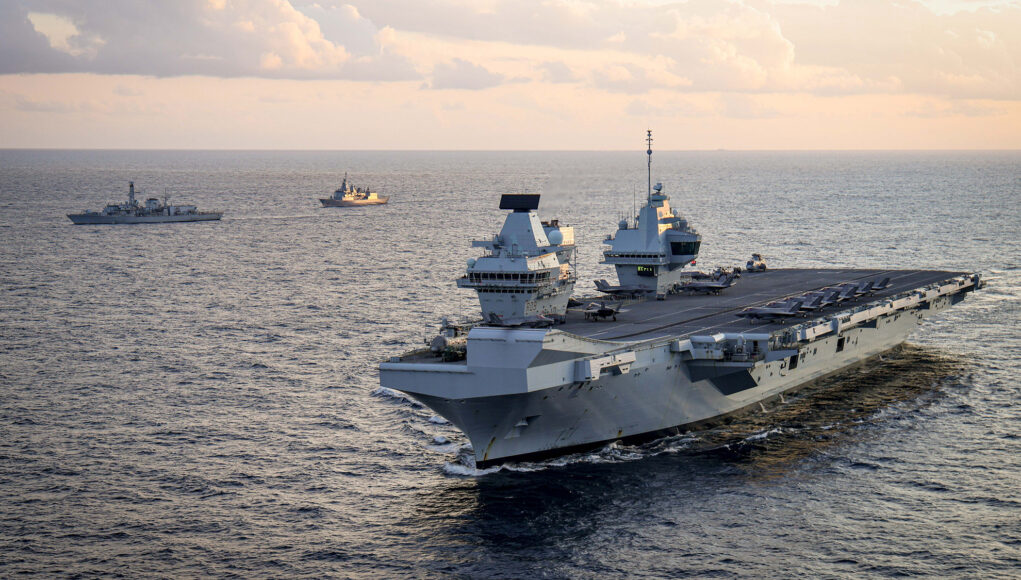

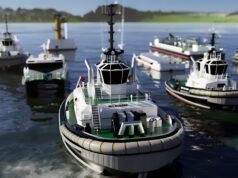
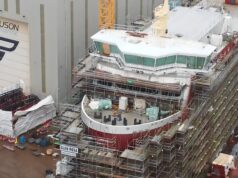

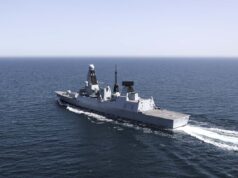


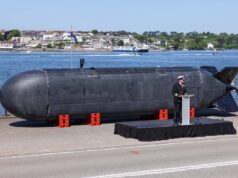
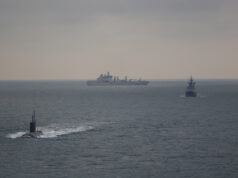
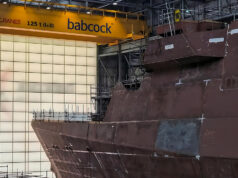

“maritme revival” ??
I think you can argue that. A work in progress obviously but if you look where the UK is heading (still scope to mess it up) but we are the only western nation seriously building ships (except maybe the ford class) in all classes. Even the US has gone a little quiet.
The first T26 and T31 will be an interesting test. If these ships perform well on trials it would make sense for many NATO nations (and beyond) to simply buy their naval needs from British yards. Those countries (especially Europe) can then focus on Tanks, Aircraft etc. giving the UK the ability to buy off the shelf in more places.
We also have carriers which are inexpensive compared to the americans and submarines.
looking good for the future (potentially).
My thoughts are with the R.N. By the time we have refurbished the fleet in ten years time (?) it will be smaller than it was 15/20 years ago so not really a revival. As is always the case we need orders now and a sensible defence budget now. We are promised what can be best described as something, nothing, perhaps, sometime. In other words the same as usual. Pollards comments are sound bites, nothing more.
Depends how you measure the past fleet against the future fleet. If you factor in lethality and survivability and also add the unmanned assets which are likely to accompany our ships in the future it paints a different picture potentially.
Fair comment on lethality but a ship can only be in one place at a time. Our existing fllet is disappearing fast and the replacements are painfully slow.
Don’t forget at same time HMG are Selling ships off.
Revival? Seriously? 🤣 The navy is reduced to an all time low number of vessels. Revival? 🤣
Yes but how do we compare to other countries. We started from a higher base. However our Carrier fleet is the best on Europe? Submarines Best? Escorts best or will be in a few years?
We are picking up orders because we are the only game in town and because we have the best designs.
Best? Some british subs could not sail last year or have been repaired with glue.
Not sure that any of that is relevant. The mere fact that it might be in a queue for maintenance and some of the fixes were fixable with a bit of glue doesn’t mean that it isn’t the best kit and that if push came to shove it could sail if needed.
I’m not sure having carriers on Europe is optimal, for a start, they would fall over… just saying like.
You could build them as hover carriers – that might work.
1 nuclear attack submarine fit fot duty out of 6. Also was it not the case pretty recently that frigates did not work in warmer waters due to some power plant deficiency?? Britain would be wise to cut the army down to 20-30 000 personnel and put scarce resources in air and sea warfighting capability. Also paramilitary forces to patrol muslim majority areas is needed to remind evertone who is the boss.
True, but that is a consequence of years of not bothering to build any new ships. If you compare the level of activity in the yards now with a decade ago then ‘revival’ seems an appropriate description.
Yes at present it’s a naval shipbuilding bump after a massive sustained slump..
“the dividends of even modest investment” is presumably an observation of the fact that the amount of ‘bang for your buck’ increases as the magnitude of your absolute spend does, due to the inevitability of economies of scale. Then there’s the fact that there’s a limit to how much capabilities can be salami-sliced before they cease to be viable. We got way past that point and so MOD has had no option but to meet its irreducible obligations badly instead (e.g. classing ships as ‘in reserve’ when they are effectively scrap). Increasing spending closer to the point that it is adequate to fund the bare minimum defence commitments properly will obviously result in a big qualitative gain- i.e. the difference between ‘works’ and ‘doesn’t work’.
If we can scale up meet Norway’s order whilst accelerating our own perhaps we can become the go to place in Europe for military ships.
People often forget there is a difference between maritime and naval and that naval is just one small part of maritime.. the Uk has invigorated one part of the naval element of maritime and that is shipbuilding..but even that is yet to be on a sustained footing.
For the UK to have a maritime revival it would need
1) a massive increase in merchant shipbuilding giving it a useful share in the global market ( say 10-20% )
2) a significant increase in port and goods handling as well as buying stakes and development of ports in other nations
3) a flagged and owned significant merchant marine ( say 10-20% of global)
4) a global strategic vision around how it will develop and explore/exploit maritime resources and markets
5) development of a significant global naval presence ( so 40+ escorts 12-20 SSNs and a auxiliary force that could sustain them globally).
So yes building a load of frigates over 2 decades is nice but it’s no renaissance of MARITIME power.
And, as I have said here many times, the new low is always then some mythical, magical benchmark that new builds are set to.
We had 13 Frigates left after the 3 T23 were lost in 2004 and the 4 B3T22 were cut in 2010.
The new builds total 13, and are described with the usual spin and waffle.
“Biggest shipbuilding program in a generation”
“Expansion”
“World class”
All the usual MoD spin. That the RN is perilously short of escorts due to Tory and Labour cuts over 2 decades doesn’t seem to be on the radar of the nation at all, apart from people like us who study defence matters.
The force needs expanding back to 20, plus the T45s on top.
I think the 5 River 2s indicate the way the fleet is changing. Could be frigate numbers will be held at 13 while the Hunts ( 6 off) are replaced by a hybrid MCM mothership / offshore patrol design from Kongsberg. The River 1s might end up being sold without replacement.
With only three amphibious ships, virtually no supply vessels, and only 14 escorts, a maritime renaissance? Ja ja ja ja.
Exciting times. It’s good to inject some positivity into the debate as opposed to withering criticism.
This “Maritime Revival” are we talking Drake, Raleigh and Hawkins style of Privateering and Exploration ?
“Splice the main brace”.
Recently came across an article that showed a decline in UK’s position i the world defence market. So just did a Google search to find those figure – ‘Between 2018 and 2022, the volume of UK major conventional weapons (MCW) exports fell by 35% compared to the 2013–2017 period.’ ‘Between 2014–2018 and 2019–2023, France’s arms exports increased by 47%, positioning it as the world’s second-largest exporter ahead of Russia.’ ‘Between 2010 and 2019, the UK often ranked as the second-largest exporter behind the US, according to UK government figures based on industry orders. However, SIPRI’s TIV-based rankings, which measure delivery volume, have often shown a different picture.’ ‘France’s Rise: Between 2019–2023, France became the second-largest global arms exporter, moving past Russia, with exports up by 47%. UK’s Position:In the same period, the UK was the seventh-largest exporter of major conventional weapons’
OK, headline figures, but it does suggest that we have fallen quite badly behind in recent years. I hope this is changing…
Meanwhile, report on X that Enterprise might be sold to Bangladesh.
Sat with Echo at Portsmouth since being cut in 2023.
Perfectly good ships with life left, apparently.
This government have no interest in defence, like the previous one, unless it gives the chance to parade on the world stage.
Has it even been explored if these hulls could be found a role?
And if there are no crew, well, bloody well recruit some.
Yep 2 big ish hulls with very good sonar and survey would be prefect for sub surface monitoring of the EEZ.
Can I have a pint of whatever he’s been drinking please?
Maritime revival 😆🤣😆😆🤣😆🤣🤣😆😆🤣😆😁😁😁😆🤣😆😆🤣😆😆🤣😁
Or does it mean that George the Editor is taking some exotic medicine and getting carried away with “Maritime Revival” ?? 😁